You think your workplace is safe, but when working offshore, the unexpected becomes reality. A recent report revealed that 40% of offshore accidents go unreported. Yes, 40%! This underreported reality is a ticking time bomb, ready to spark at any moment.
And why now, you wonder? In today’s global economy, more jobs are shifting offshore, including yours and maybe your neighbor’s, raising concerns about legal coverages and safety regulations. With the stakes higher than ever, knowing your rights and options is critical, almost like having a lifeline ready.

Surprised that offshore workers face higher risks of injury? You're not alone. What’s shocking is that many companies continue to operate in loosely regulated waters to save costs. Worse still, they often escape liability for accidents despite having clear responsibilities. But that's not even the wildest part…
Imagine suffering an injury miles from home and having no legal recourse. Many incidents are buried beneath layers of bureaucracy and jurisdictional loopholes. This means even if the accident wasn't your fault, pursuing justice could feel like an uphill battle. Yet, what you’ll read next will change your perception of safety forever…
What happens next shocked even the experts. Offshore workers discovered a little-known legal instrument that could redefine safety standards and ensure fair compensation. The next page unveils this groundbreaking revelation and how it caught companies by surprise...
The Jones Act is primarily known for its role in U.S. maritime law, yet it holds surprising power for offshore workers. Unlike typical workers’ comp, it allows individuals to sue their employers for negligence. Most are unaware that this act extends to offshore injuries, offering a path many didn't realize existed. But there’s more—employers often rely on this ignorance, hoping workers never find out.
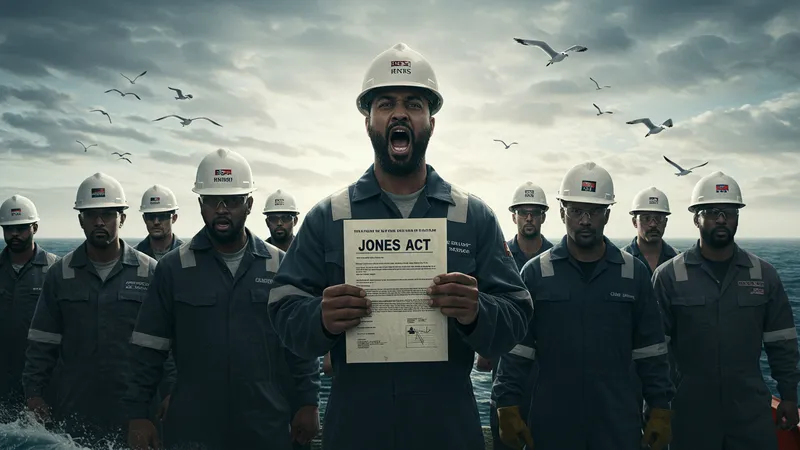
It’s an ace up your sleeve, demanding proof of negligence but opening doors to compensation for pain, suffering, and lost wages. Many workers have successfully used this avenue to secure settlements that seemed out of reach. How are companies responding to this newfound empowerment? Let’s just say, it's causing a stir they didn't expect.
Surprisingly, while the act favors employees, it remains underutilized due to complicated legal content and steps involved. Understanding its power demands detailed legal guidance, which most offshore workers might shy away from initially. But what if you could learn how to leverage it without the overwhelming complexity?
Navigating offshore claims can be as turbulent as the seas themselves. Yet, understanding how the Jones Act is another tool in your arsenal may shift the balance of power. Curious about how else this little-known act can truly be a dealmaker or breaker? Hang tight, because the next page uncovers a twist that’ll stun even the savviest legal minds.
International waters create a unique legal vacuum where typical rules are fluid. Many offshore operations occur beyond national borders, creating a complex web of jurisdictional challenges. What does this mean for an injured worker? The rules can seemingly change depending on where exactly the incident happened, bringing a blend of international, maritime, and local laws into play.
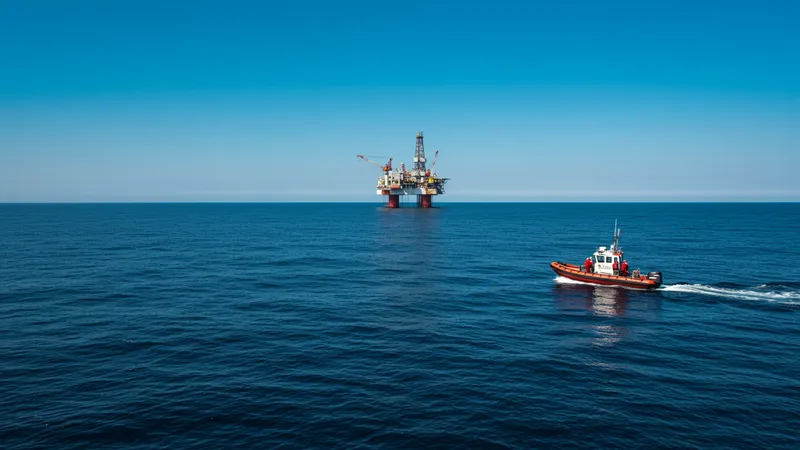
This lack of concrete regulations can pose risks and opportunities. While a company might believe they can evade responsibility due to these murky waters, workers have found ways to use them to their advantage, compelling companies to rethink their safety measures or face legal repercussions. Intrigued yet? The intricacies are astounding.
By understanding these loopholes, workers have been able to hold firms accountable, despite geographical complexities. It also means that an injury isn’t always bogged down by the nation’s overly bureaucratic processes. There’s a nimble maneuverability that you wouldn’t expect. But figuring out the right legal tango might be the key to unlocking justice.
Are you wonder-struck yet? The deep dive into this labyrinth continues with astounding revelations on the next page, where industry insiders spill the secret strategies exploited by both sides. Equip yourself with this knowledge to turn the tables—because what you find out next could make all the difference in your safety toolkit.
When offshore law feels unquestionably daunting, it pays to have experts on your side. Offshore injury lawyers specialize in these murky waters and can help steer your case with precision. They often use strategies unknown to standard legal practices, offering bespoke solutions that can maximize your compensatory payouts.

These specialists might employ tactics such as specifying jurisdiction or utilizing international maritime liens. They're trained to navigate the dual nature of territorial and high sea laws, ensuring an injured worker’s rights are protected, no matter where the incident occurred. Could the right legal support transform a seemingly lost cause?
The cost could initially seem prohibitive, yet many of these specialists work on a contingency basis, meaning they don’t get paid unless you win the case. This provides an incentive for lawyers to fight tooth and nail. Wondering how else they can tip the scales? Their strategies often disrupt corporate defenses in unexpected ways.
Are you hungry for more groundbreaking insights? The next page reveals the untold stories and secret successes of those who dared to explore uncharted waters with legal backing. Prepare to be inspired by these tools at your disposal, and remember, forewarned is forearmed.
Often, the key to change lies not just in reactive but proactive measures. Offshore workers who voice safety concerns can become powerful agents of change. However, they must be protected—not silenced. That’s where whistleblower protections, such as those offered under various international treaties, become crucial allies in their quest for safer work environments.
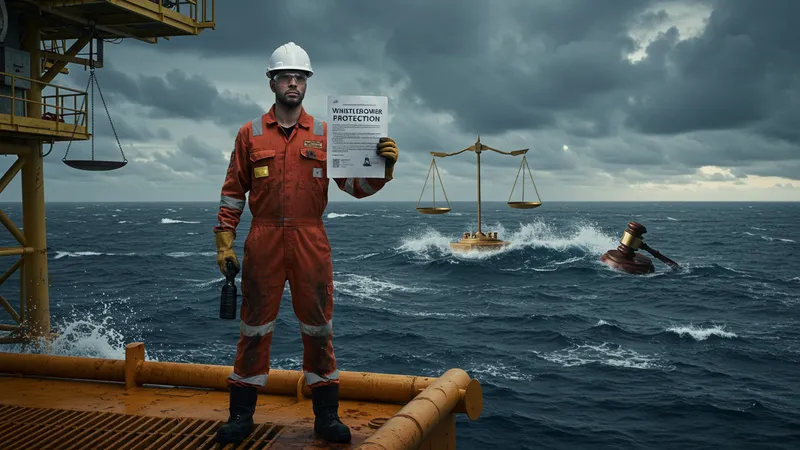
These protections often come with guarantees against retaliation, ensuring safety violations can be reported without fear of losing one’s job. In an extraordinary twist, companies find themselves having to reassess their operating standards when whistleblowers step forward, backed by solid legal provisions. How does this transformative power reshape the landscape?
Whistleblower laws ensure that those daring to speak up are backed by a force greater than themselves. In navigating these treacherous waters, just one brave individual can initiate the overhaul of systemic flaws. Imagine the ripple effect of a single report! Is it possible that such actions could cascade into broader industry reforms?
The narrative intensifies as the next page delves into specific, real-life instances where whistleblower interventions catalyzed significant safety overhauls. Are you ready to explore how courageous individuals have turned the tide in their workplace? You’re about to learn the full scope of this hidden potential.
In an industry where the bottom line often takes precedence, adhering only to the minimum compliance can lead to hidden costs. When companies choose this path, they may face unforeseen consequences—fines, shutdowns, and intangible reputational damage that far outweigh initial savings from cutting corners.

The cost of non-compliance extends far beyond monetary penalties. An unanticipated disaster could mean a permanent tarnish to a brand. But what if investing proactively in safety measures could save more in the long run? Progressive companies have begun to realize the long-term benefits of exceeding compliance expectations.
A shift is occurring, as some firms recognize the myriad of advantages—enhanced worker loyalty, lower turnover, and, crucially, a cleaner record. These entities have shared their experiences, showcasing how a commitment to safety can indeed distinguish leaders from laggards. How significant is this shift, and what does it mean for employees?
Are you curious to understand how adopting these safety innovations has vastly improved company standings? The next page unveils inspiring case studies where exceeding the bare minimum led to unbelievable transformations. Step into this revelatory journey and see how it reshapes the industry standard.
The united voice of a workforce is a force to be reckoned with. Collective bargaining offers offshore workers a powerful avenue to negotiate for improved conditions and safety measures. Through unions or worker coalitions, employees can press for rights once thought unattainable, driving change from within.
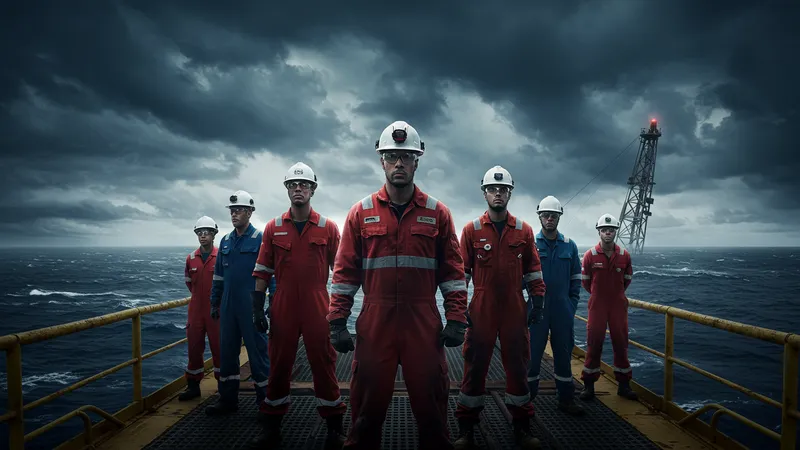
Achieving such change isn’t without its challenges. Companies often resist these movements, citing operational disruptions or cost implications. Yet, those spearheading these efforts understand that solidarity can break through even the toughest corporate defenses. Are the tides truly turning in favor of workers?
Many movements start small, with grassroots efforts that eventually swell into sweeping changes in national policy and company guidelines. What starts as whispers in break rooms can transform into full-blown reforms through concerted, collective action. How does knowledge of these stories fuel further movements?
Intrigued by how far-reaching the impact of collective efforts can be? Discover the stories of those who united under one common cause and reshaped an industry. The next page delves deeper into these telling narratives, offering a blueprint for future success. Stay tuned for a lesson in unity and strength!
With advances in technology, the face of offshore work is undergoing a metamorphosis. The proliferation of AI and automation poses new challenges and incredible opportunities for improving safety and efficiency. Yet, it’s a double-edged sword—offering solutions while also introducing unforeseen risks.
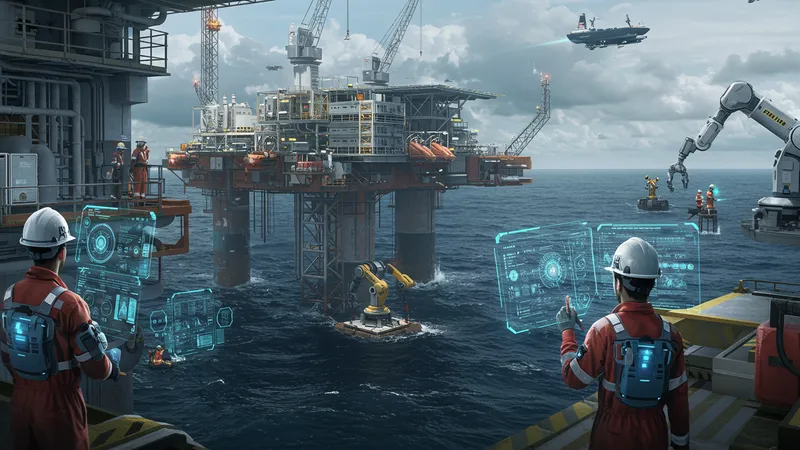
Wearable technology that monitors vital signs and alerts workers to fatigue in real time is now a game-changer. But, on the flip side, automation has been linked to the displacement of workers and the potential erosion of skill sets. How do these technological shifts impact offshore safety dynamics?
With smart machinery taking over routine tasks, human oversight remains paramount to avoid dependency that could lead to catastrophic failures. It’s an intricate balancing act that requires careful consideration of both the benefits and limitations of emergent technology. Are offshore workers ready for this brave new world?
Excited yet wary about the role of technology in offshore operations? The next page shares expert insights and pivotal technology implementations that are shaping the future today. Enlighten yourself with what the tech revolution means for offshore safety and productivity dynamics. Prepare for a glimpse into tomorrow!
Legislation governing offshore work is in constant flux. Changes in international law, coupled with evolving environmental considerations, necessitate regular updates that could impact every offshore worker. While daunting, these shifts also present an opportunity to strengthen protections and responsibility mechanisms.
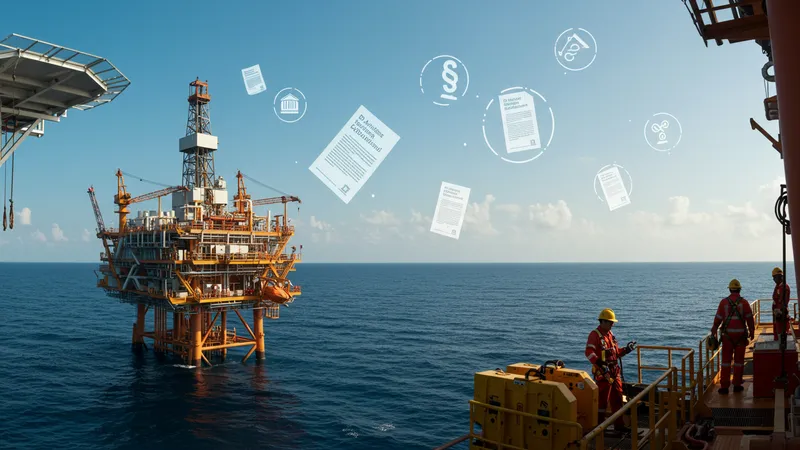
As policymakers increasingly turn their gaze towards sustainability, new regulations could demand stricter safety standards that improve worker welfare. However, resistance from some quarters due to cost implications means balancing act calls for robust dialogue between governments, companies, and labor organizations.
The tug-of-war between enforcing robust safety measures and maintaining commercial viability has never been more pronounced. But with the stakes this high, how are key players ensuring progress without stagnation? Is this dance of compromise leading us towards meaningful reforms or superficial adjustments?
Curious about upcoming legal developments and their potential impact? The next page explores imminent legislative changes and their implications. Discover how the sands of offshore work continue to shift, creating both challenges and opportunities for all involved. Join us as we unpack the complex legal landscape!
Offshore work isn't just a human safety issue; it intertwines deeply with environmental risks. Oil spills, gas leaks, and other ecological disasters have severe legal consequences, impacting not just companies but global ecosystems. Enhanced scrutiny demands innovative responses from offshore operations.

When things go wrong, companies face the wrath of billion-dollar suits, which push them to rethink practices. Critics call for preventive measures rather than reactive liabilities, but achieving harmony between operational efficiency and environmental stewardship remains a monumental task. Can this balance be realistically achieved?
Fascinatingly, legal reforms and environmental policies are driving companies to adopt greener, cleaner technologies to minimize risk and improve compliance. As these innovations emerge, they provide a beacon of hope for sustainable offshore practices. But what does it mean for the worker on the rigs?
Compelled by the intricate dance between legal regulation and environmental protection? The next page delves into groundbreaking solutions being explored, revealing a rethinking of offshore operations for a healthier planet. Uncover the spirited urgency driving current and future initiatives!
Offshore environments bring together a diverse tapestry of cultures, each with its own norms and practices. Yet, these differences can lead to miscommunication and discord, impacting safety and operational efficiency. How are organizations bridging these cultural divides to foster teamwork and unity?
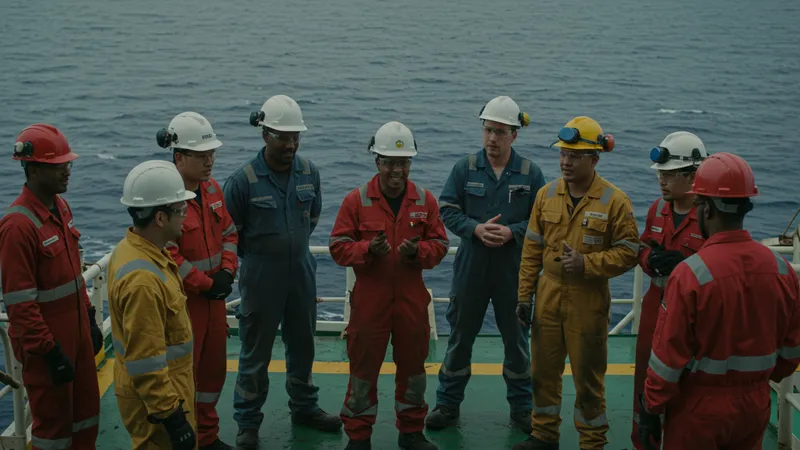
Through cultural competence training and inclusive policies, companies aim to cultivate environments where diversity becomes a strength. They recognize that understanding various cultural perspectives can dramatically improve safety outcomes and morale. Is the unity within reach, and how is it bringing unprecedented gains?
Testimonials abound illustrating the profound impact of fostering a culture of inclusion. Workers report increased job satisfaction and teamwork, which correlates with enhanced safety records and operational efficiency. Could it be that embracing diversity is a key component of offshore success?
Are you drawn to stories that highlight the power of cultural integration? The next page highlights success stories demonstrating the tangible benefits of cohesive multinational teams. Join us on a discovery journey where understanding and cooperation lead to offshore harmony.
Insurance coverage for offshore work is not just a financial tool; it's a safety net that can make or break individual prospects. However, not all policies are created equal, and understanding the nuances can mean the difference between security and vulnerability.

Interestingly, insurers are adapting rapidly, offering more comprehensive coverage options that address both immediate occupational hazards and long-term health effects. Progressive policies that incentivize safer work environments and fewer claims are emerging. How are these shifts reconfiguring an already complex landscape?
For workers and companies alike, choosing the right insurance is about risk management strategies that ensure preparedness in facing offshore adversity. But the question remains: are stakeholders equipped to navigate these intricacies, and could better choices lead to improved conditions? Prepare to be intrigued by how insurance evolution is redefining risk management.
If you're primed to explore how adjustments in insurance policies could lead to transformative offshore work environments, the next page is for you. Dive into the world of maritime insurance innovations, gaining insights that defy conventional understanding. Bring your questions, because answers await!
Effective training is a cornerstone of safety in offshore work, yet skill gaps remain a persistent issue. Addressing these disparities is crucial for not only preventing accidents but for empowering workers with confidence and competence.
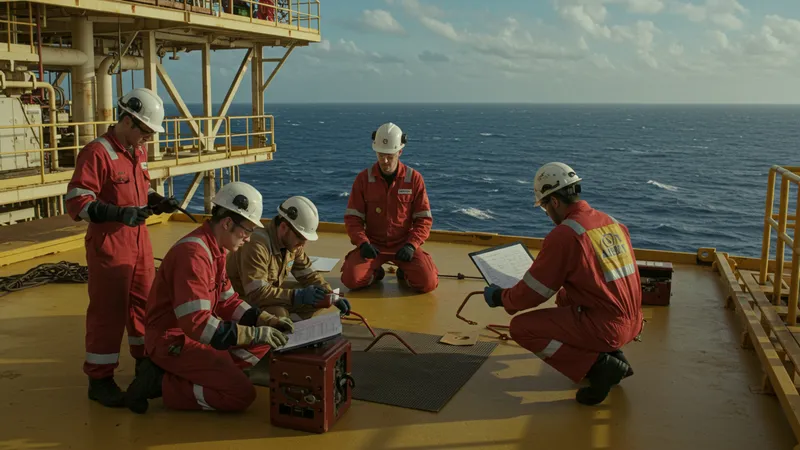
It's proven that rigorous training programs, tailored to specific operational contexts, can reduce injury rates significantly. However, challenges persist in ensuring training remains current and accessible to all workers. Could enhanced training models lead to a new era of safety and efficiency? Companies are betting on it, and so should you.
Interestingly enough, innovative simulation training offers hands-on experience in controlled environments, preparing workers for real-life scenarios without the accompanying risks. This approach has shown to dramatically improve retention and application of critical safety protocols. Are these methods the missing link in offshore safety?
Curious about the impact of comprehensive training on offshore safety? The next page unveils strategies driving transformation, where refined skill sets lead to life-saving advances. Buckle up for a journey into the empowerment of the workforce as you delve into these educational revelations.
And there you have it. The radical transformation of offshore safety is not just a distant dream but a foot-tapping reality that requires informed choices, proactive measures, and collective responsibility. What started as a mere whisper has become a clarion call for change, resonating with workers, companies, and legislators alike.
Ready to play your part in shaping a safer, fairer world of offshore work? Share this article, keep the conversation alive, and ensure these life-changing insights reach those who need it most. Together, we can steer this ever-evolving landscape towards a better, more secure future.